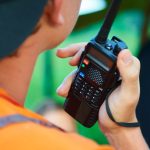Radio batteries play a critical role in ensuring seamless communications, whether in emergency services, outdoor adventures, or daily professional use. However, one overlooked aspect of battery performance is self-discharge. Understanding radio battery self-discharge rates and how they affect battery reliability is key to optimizing usage and extending the lifespan of these essential power sources.
Learn what self-discharge is, the factors influencing it, how various types of radio batteries differ in their discharge rates, and how to measure and minimize its impact. Whether you’re relying on radios for work, recreation, or emergencies, this guide will help you stay powered and prepared.
An Introduction to Radio Battery Self-Discharge
Self-discharge refers to the natural phenomenon where batteries lose their stored energy over time, even when they are not powering a device. This energy loss occurs because of internal chemical reactions within the battery. While all batteries have some level of self-discharge, the extent of energy loss can vary significantly depending on the battery’s type, composition, and environmental conditions.
For radio users, self-discharge is particularly important to understand. A battery that discharges too quickly when left idle can lead to flat batteries at the most inconvenient times, jeopardizing productivity or, in some cases, safety. Radios need reliable power to function, making the management of self-discharge a crucial element of battery maintenance.
Factors Affecting Self-Discharge Rates
Several factors influence how quickly a battery will self-discharge. Environmental conditions, battery chemistry, age, and even storage practices all play a role.
Temperature
Temperature is a well-known accelerator of self-discharge. Batteries stored in hot conditions tend to lose charge faster compared to those kept in cooler, controlled environments. Understanding this is particularly important for those storing spare radio batteries on the go or in challenging climates.
Battery Chemistry
The materials used in the battery’s construction also affect self-discharge rates. Some chemistries are more stable than others, naturally maintaining their charge for extended periods.
Age
Age is another contributing factor. Older batteries, even if infrequently used, are more likely to lose energy due to wear on internal components.
Storage Practices
Leaving a battery connected to a radio or any device—even in standby mode—can increase self-discharge. When connected, small amounts of energy are trickling away even when not actively in use.
Understanding these factors allows radio users to make more informed decisions about battery management, reducing the likelihood of unpleasant surprises when they most need a charged device.

Types of Radio Batteries and Their Self-Discharge Rates
Radio batteries come in various chemistries, each with unique characteristics that impact their self-discharge rates. These types include nickel-cadmium (NiCd), nickel-metal hydride (NiMH), lithium-ion (Li-ion), and lithium polymer (LiPo). Each has its advantages and drawbacks in terms of energy retention and longevity.
Nickel-Cadmium
Nickel-cadmium, one of the earliest rechargeable battery types used in radios, has a relatively high self-discharge rate. While these batteries are durable and can cycle through many charges, they lose charge faster when left unused compared to newer technologies.
Nickle-Metal Hydride
Nickel-metal hydride batteries offer improved energy density over NiCd but still exhibit a moderately high self-discharge rate. This makes them less ideal for radios stored for long periods between uses.
Lithium-Ion
Lithium-ion batteries have quickly become popular due to their lower self-discharge rates, higher energy density, and lighter weight. These batteries lose energy at a much slower rate, making them suitable for modern communication devices used intermittently.
Lithium Polymer
Lithium polymer batteries—a derivative of lithium-ion—also feature excellent charge retention but are typically more specialized and less widely used.
Knowing the properties of these different battery types can help users select the best option for their needs. Factors such as the frequency of radio use, storage conditions, and weight considerations will all influence the most suitable choice for any given application.
Self-Discharge Rate Measurements
Understanding how to measure self-discharge rate can be invaluable, particularly for those managing multiple radio devices or relying on them for critical operations. Measuring this rate involves tracking the battery’s capacity over time when it is not actively in use. For simplicity, people often express this as a percentage of remaining charge lost per month.
To measure self-discharge, begin by fully charging the battery and then allowing it to sit unused for a set period, such as one week or a month. Use a voltmeter or a battery diagnostic tool to check the remaining charge. A drop in voltage or percentage from the original full charge indicates the self-discharge rate. It is important to test under specific conditions, noting temperature and storage location to ensure accurate results.
Maintaining a test log can help identify trends in specific batteries’ performance over time. For individuals or organizations managing multiple batteries, such as emergency services teams, this level of monitoring facilitates proactive replacements, ensuring that all equipment is ready for action when needed.

Tips To Minimize Self-Discharge
Minimizing self-discharge is achievable with consistent battery care and smart storage practices. One of the first steps to reducing energy loss is to store batteries in a cool, dry place. Extreme heat accelerates chemical reactions within the battery, leading to faster depletion of energy. Avoid leaving spare batteries in direct sunlight, near heat sources, or in vehicles exposed to fluctuating temperatures.
Using batteries regularly and cycling through your inventory ensures they stay active and don’t deteriorate from disuse. When storing batteries long-term, manufacturers often advise storing them at partial charge rather than fully charged or depleted. This reduces stress on the battery and slows chemical degradation.
Investing in high-quality batteries with low self-discharge chemistry, such as lithium-ion or lithium polymer, can also make a difference. These advanced chemistries deliver long-lasting performance, even when left unused for weeks or months. And a smart charger prevents overcharging and associated wear and tear by automatically shutting off when a battery reaches full capacity.
Remember to always read the manufacturer’s recommendations for care and maintenance. These guidelines pertain to the specific battery type and are an invaluable resource for extending battery life.
How To Optimize Your Radio Batteries
Understanding radio battery self-discharge rates is a critical element of ensuring effective and reliable communication systems. From understanding the factors that impact discharge rates to choosing the right battery and maintaining it properly, you can make smart decisions and avoid inconvenient or dangerous power failures. Optimizing battery care with best practices like controlled storage and regular monitoring can significantly enhance the lifespan of your batteries and provide optimal performance for your radios.
If reliable and consistent power is essential for your work or activities, check out Battery Distributors’ selection of high-quality battery replacements, including Motorola XPR 6550 Li batteries. With our long-lasting batteries, you can make sure your communication tools remain dependable whenever you need them. Browse our products to find the perfect option for your needs!











